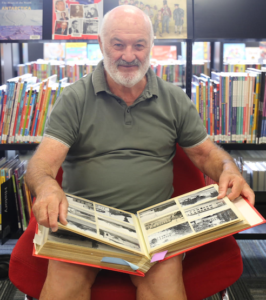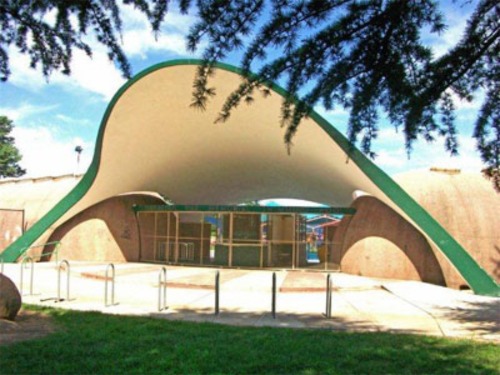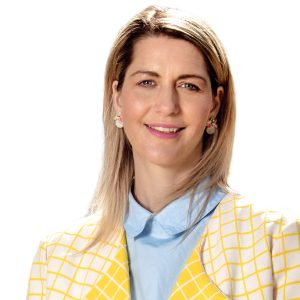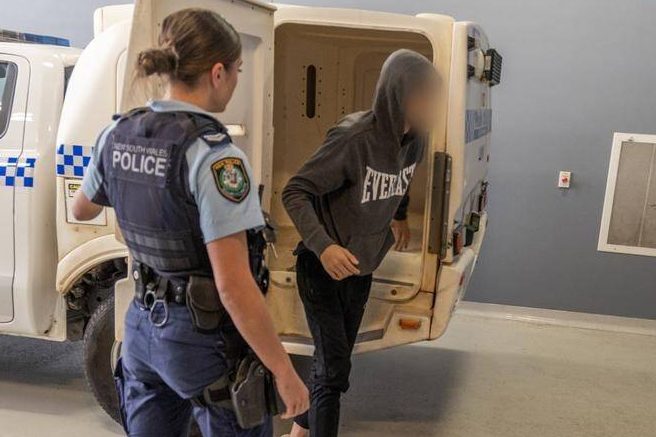
FORGET the pub or the post office. The heart of a town in the sweltering heat of summer is its outdoor swimming pool.
While most pools run at a loss and are financial burdens on cash-strapped councils, residents see them as iconic assets, considered vital to the life of many communities.
The pool in Queanbeyan is no exception.
Built almost 60 years ago, when life was spent under the trees, with liberal coatings of coconut oil, flirting and fun.
Gone are the diving boards, the slippery dip and the trampolines, but the memories are still alive.
“It was our summer home,” long-time Queanbeyan resident and history buff Phill Hawke says.
“Many of us grew up at the pool arriving early and having to be home by sunset.”
There were impromptu games of water polo, cricket and diving competitions.
And no signs saying “No”.

“The ‘poolies’ wore their little, metal, season pass stitched or safety pinned on to the Speedos… you could come and go as you liked,” he recalls.
Before the pool was built, there was the river.
“There were swim holes known as White Rocks, Cascades, Conny Rocks and the weir to Queen’s Bridge,” Hawke says.
“You could jump off the weir and you could hide under the weir overflow.”
But river swimming was dangerous and drownings were common.
In 1901, Terry Marr, 14 years-old, of Macquoid Street, had a lucky escape when he was swept through the floodgates of the weir.
Others were not so fortunate.
John “Bennie” Gale, the eldest son of John Gale – the father of Canberra – and his wife Loanna, drowned in the river in January 1877, aged 14.
“Then in 1928, nine-year-old Edith Warren was seen playing in the water on a shallow bank near the old mill, her body was later discovered in a deep hole downstream,” Hawke says.
The push for the pool really took off when, in 1949, Margaret Donoghue, Queanbeyan’s first woman to hold civic office, witnessed a drowning of a 13-year old girl.
“After that, things really got rolling,” Hawke says.

Council approved the pool, to be built on Moore Park between Campbell and Crawford Streets, and designed by Robert G. Warren featuring “sausage shaped” domes which still make an impression today.
“Warren was really interested in shell concrete domes and incorporated the design in some of the projects he tendered for, such as a circular domed chapel for St Philip’s at O’Connor, it was never built but received plenty of attention,” says Hawke.
Local community groups chipped in with funding, the Queanbeyan Rotary Club’s annual floral festival raised 16,000 pounds, a state government grant of 10,000 pounds and a Commonwealth Bank loan of 53,990 pounds helped pay for the construction.
More than 3789 swimming enthusiasts rushed through the new turnstiles on the October 1961 long weekend.
First in the water was Allan Fraser MP, who held the federal seat of Eden-Monaro from 1943 to 1966.
The pool’s official opening took place on Armistice Day, November 11, 1961.
“From then on, the kids from the area would congregate at the pool every day and all the weekend,” recalls Hawke.
“It was always a battle for firsts, first in for the season, first to be suspended, first to get a season ticket.
“One person who was always first was Manuel Pappas, he would swim underwater from one end of the pool to the other, if anyone matched him, he would go further.”
Like many in the 1960s, Margaret Wallace “lived” at the pool.
“At night, it was freezing,” Wallace says.
“My sister and I used to wear jumpers because we did not have wetsuits and wool was the only thing that could keep us warm.
“I remember mum saying: ‘Why don’t you just take your beds up there and sleep there’.”
Queanbeyan has probably produced more sporting stars per capita than any other city in the nation with superstars on the footy field, cricket pitch, tennis court and in the pool.
Former secretary of the Department of Defence, diplomat and Queanbeyan swimming club champion Dr Allan Hawke won the NSW “iron man” title in 1965, the first time a country competitor had won the event.
“Notable swimmers from Queanbeyan include Doug Cocking, a competitive swimmer at country, state and national level before going on to represent Australia in water polo,” says Phill Hawke.
“And, of course, Angie Kennedy won a silver medal at the 1996 Atlanta Olympics as a member of the Australian women’s medley relay team.”
The Queanbeyan pool celebrates its 60th birthday in 2021.
Who can be trusted?
In a world of spin and confusion, there’s never been a more important time to support independent journalism in Canberra.
If you trust our work online and want to enforce the power of independent voices, I invite you to make a small contribution.
Every dollar of support is invested back into our journalism to help keep citynews.com.au strong and free.
Thank you,
Ian Meikle, editor





Leave a Reply